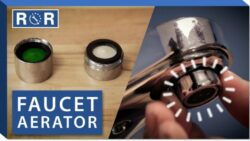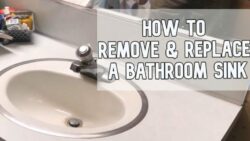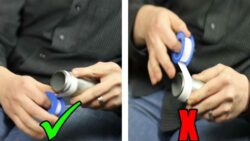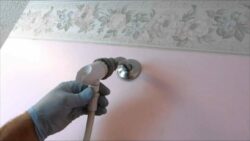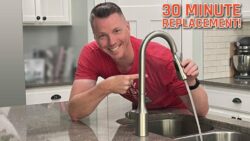Installing a sump pump check valve is an essential step in ensuring the efficiency and reliability of your sump pump system. This comprehensive step-by-step guide will walk you through the process of installing a sump pump check valve, providing you with valuable insights and instructions to successfully complete the task. By following this guide, you will be equipped with the knowledge and skills needed to properly install a sump pump check valve and protect your basement or crawl space from potential flooding and water damage.
A Step-by-Step Guide to Install a Check Valve on a Sump Pump
A sump pump check valve is an essential component of a sump pump system, as it prevents water from flowing back into the sump pit after it has been pumped out. Without a check valve, the pump would have to work harder to re-pump the same water, leading to overheating and premature failure. In this comprehensive guide, we will walk you through the process of installing a sump pump check valve, step by step.
Tools and Materials
Before you begin the installation process, it is important to gather all the necessary tools and materials. Here’s a list of what you will need:
- Sump pump check valve
- PVC pipe cutter or hacksaw
- PVC primer and cement
- Tape measure
- Adjustable wrench
- Pipe fittings (if necessary)
- Teflon tape
- Safety goggles
- Gloves
- Marker or pencil
By having these tools and materials ready, you can ensure a smooth installation process without any unnecessary interruptions.
Preparing for Installation
The first step in installing a sump pump check valve is to prepare the area for installation. Start by turning off the sump pump and unplugging it from its power source. This will ensure your safety and prevent any accidents during the installation process.
Once the pump is turned off, you can remove the discharge pipe from the top of the pump. This pipe is typically connected with hose clamps, so you’ll need to use an adjustable wrench to loosen and remove them. Carefully disconnect the pipe and set it aside for now.
Choosing the Right Location
After the pump and discharge pipe are disconnected, you need to choose the right location for the check valve. The check valve should be installed vertically, with the arrow on the valve indicating the direction of water flow. It is crucial to install it in the correct orientation, as installing it upside down can render it ineffective.
Look for a suitable location along the discharge pipe, preferably as close to the pump as possible. This will help minimize the potential for water to flow back into the sump pit. Ensure that there is enough space around the chosen location to make the installation process easier.
Measuring and Cutting
With the location determined, you can now measure and cut the discharge pipe to the appropriate length. Use a tape measure to measure the distance between the chosen location and the end of the pipe. Mark the measurement with a marker or pencil.
Next, use a PVC pipe cutter or a hacksaw to cut the pipe at the marked measurement. Take your time and make clean, straight cuts to ensure proper fitting and sealing. Remove any burrs or rough edges with a file to avoid damaging the check valve or impeding water flow.
Connecting the Check Valve
After successfully cutting the discharge pipe, it’s time to connect the check valve. Apply PVC primer to the outside of the pipe and the inside of one end of the check valve. Follow the primer manufacturer’s instructions for application and drying time.
Once the primer has dried, apply PVC cement to the primed surfaces. Be sure to apply the cement evenly to ensure a strong and secure connection. Quickly push the check valve onto the pipe, ensuring that it is fully inserted. Hold the joint firmly for a few seconds to allow the cement to set.
Attaching the Check Valve to the Discharge Pipe
With the check valve connected to the pipe, it’s time to attach it back to the sump pump. Apply PVC primer to the exposed end of the pipe and the connection point on the pump. After the primer dries, apply PVC cement to both surfaces and quickly reattach the pipe to the pump.
Make sure the pipe is aligned with the pump and push it firmly into place. Hold the joint steady for a few seconds to allow the cement to set and create a solid connection. This step ensures that the water will flow through the check valve and be discharged properly.
Securing the Check Valve
To ensure that the check valve remains securely in place, it is recommended to use pipe fittings for added stability. Attach the appropriate fittings to the check valve and the discharge pipe, following the manufacturer’s instructions.
Once the fittings are securely fastened, use Teflon tape to wrap the threaded connections. This will help create a watertight seal and prevent any leaks. Wrap the tape around the threads in a clockwise direction, making sure to cover the entire length of the threads.
Testing the Check Valve
After completing the installation, it is crucial to test the check valve to ensure that it is functioning correctly. Turn on the sump pump and observe the flow of water through the discharge pipe. The water should flow freely out of the pipe and away from your home.
While the pump is still running, temporarily turn off the pump and observe the check valve. It should close tightly, preventing any water from flowing back into the sump pit. If you notice any leakage or water flowing back, double-check the installation steps and make any necessary adjustments.
Troubleshooting
If you encounter any issues during the installation or testing process, it is important to troubleshoot and address the problem promptly. Common issues may include leaks, improper fittings, or a malfunctioning check valve.
Ensure that all connections are tight and secure, and that there are no signs of leaks. If leakage persists, disassemble the joint and thoroughly clean the surfaces before reassembling with new PVC primer and cement. If the check valve is not functioning properly, consider consulting a professional for assistance.
Maintenance Tips
Proper maintenance of your sump pump check valve will ensure its longevity and effectiveness. Regularly inspect the valve for any signs of wear or damage, and promptly replace any faulty components. Additionally, check the discharge pipe for any obstructions or debris that may impede water flow.
To prevent any potential freezing in colder climates, consider insulating the check valve and discharge pipe. This will help protect against damage caused by freezing temperatures. Lastly, keep the area around the sump pump clean and free from debris to maintain optimal performance.
By following this step-by-step guide and implementing these maintenance tips, you can confidently install a sump pump check valve and ensure the efficient operation of your sump pump system. Remember to prioritize safety throughout the installation process and consult a professional if you encounter any difficulties or uncertainties.

